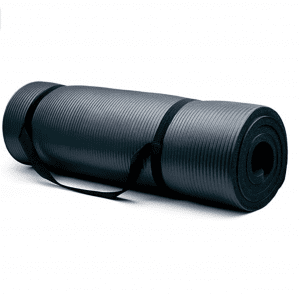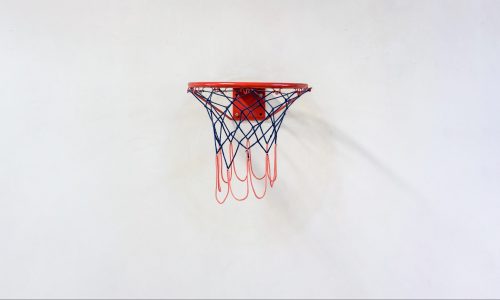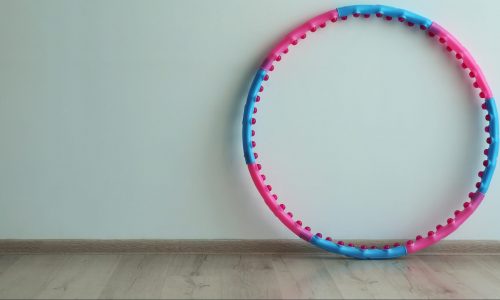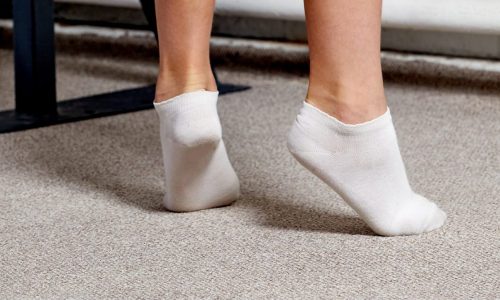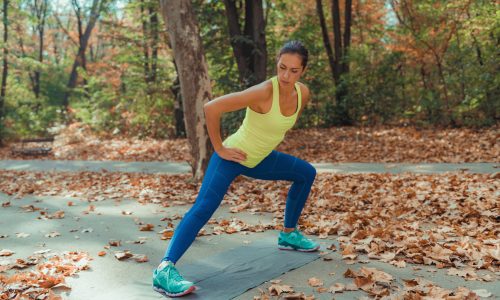The Best Yoga Mat
We looked at the top 22 Yoga Mats and dug through the reviews from 166 of the most popular review sites including and more. The result is a ranking of the best Yoga Mats.

Our Review Process
Don't Waste Your Money is focused on helping you make the best purchasing decision. Our team of experts spends hundreds of hours analyzing, testing, and researching products so you don't have to. Learn more.
Our Picks For The Top Yoga Mats
- 1. AURORAE Odorless Lightweight Yoga Mat
- 2. Sunny Health & Fitness Tear-Resistant Foam Yoga Mat
- 3. BalanceFrom GoYoga Yoga Mat, 1/2-Inch
- 4. Ewedoos Eco Friendly Non-Slip Yoga Mat
- 5. IUGA Body Aligning Studio Yoga Mat
- 6. ProsourceFit Extra Thick High Density Yoga Mat
- 7. Gaiam Non-Toxic Cushioned Yoga Mat
- 8. Heathyoga Central Line Extra-Long Yoga Mat
- 9. YogaAccessories Premium Foam Yoga Mat
- 10. YogaAccessories Grippy Easy Clean Yoga Mat
- 11. Lululemon Moisture Absorbing Antimicrobial Yoga Mat
- 12. AmazonBasics Textured Shock-Absorption Yoga Mat
- 13. BalanceFrom GoYoga Double-Sided Yoga Mat
- 14. AmazonBasics Roll-Up Easy Carry Yoga Mat
- 15. Crown Sporting Goods Easy Carry Exercise Yoga Mat
- 16. Clever Yoga Lightweight Long-Lasting Yoga Mat
- 17. Jade Harmony Natural Rubber Yoga Mat
- 18. Manduka X Sustainable Professional Yoga Mat
- 19. REEHUT Sweat-Proof Biodegradable Yoga Mat
- 20. Manduka PRO Eco Friendly Oeko-Tex Yoga Mat
- 21. Athletic Yoga Gaiam Reversible PVC Mat
- 22. Sivan Health and Fitness Yoga Mat
You're sure to find this yoga mat in a color that suits your style, as it's available in 12 different shades. The mat itself is a bit thicker and longer than other options on the market, which is ideal if you are on the tall side. Even with the added thickness, the mat only weighs 4 pounds, making it easy to transport.
Wipes Clean With EaseThis yoga mat is travel-friendly and can be used at the beach, park, gym or in a hotel room.
The textured surface on this yoga mat means you'll have a better grip to hold your pose. Since the mat is constructed from a durable PVC material, you can also count on it lasting many years. Of course, the mat rolls up nice and small, making it portable for exercising at the park or local gym.
Affordable Price TagWhen shopping on a budget, this yoga mat is the way to go.
We like how much grip there is in this yoga mat. The included carrying strap adds a great value as well since you can easily wrap up this 1/2-inch thick mat and hook the carrying strap on for the ultimate convenience.
Double Sided GripThis yoga mat has a lot of grip and comes with a carrying strap.
No matter what type of yoga you're performing, this yoga mat is an excellent choice. The surface is non-slip, which will help you hold your pose. You'll also love the extra-large size, as it offers more room to move around and switch positions.
Five Fun ColorsThis yoga mat is constructed using a thermoplastic elastomer foam that's completely eco-friendly.
Buying Guide
Although yoga became a fad several years ago, many who participate in yoga do not know the entire history of it. The practice began thousands of years ago to give individuals a well-rounded approach to health, including mental, spiritual, emotional and physical health.
Founded in India and encompassing many different types, hatha yoga is what is most commonly practiced today. This is a fraction of the entire yoga philosophy but has taught so much to many individuals nonetheless. From stress-relief and fitness to healing and mental clarity, yoga has become an integral part of many people’s lives. Part of the attraction to yoga for many people is the ability to do it anywhere, anytime. It does not require excessive gym equipment or bodybuilding weights or a home gym room. All you need is a good yoga mat that stores neatly in your closet or in a duffel bag for traveling, and you are all set.
So much more than just a tool, the yoga mat is a representation of the space that one sets aside for their stress-free yoga time. The yoga mat can be traced back to Angela Farmer in the late 1960s. She really wanted to practice yoga, but a medical condition didn’t allow for the average traction that most people have with their hands and feet. She discovered that a piece of cushion from underneath a carpet was working really well for her, and when her students saw hers, they wanted one of their own. Her father turned to a German carpet company to create and sell yoga mats. He started this home business in Vancouver Island in his home. Although it was started as an adaptation for Angela’s medical condition, it became a symbol of yoga around the globe.
Yoga mats can be used for more than just yoga, too.
Stephanie Mansour, a certified personal trainer and the founder of fitness brand Step It Up With Steph, says this is the No. 1 investment she recommends to clients who want to get in a good workout at home.
“Not only is a yoga mat great for stretching, lying down on the ground, and padding your knees and feet, but it’s also a great signal that you’re setting up your workout and getting in the zone,” she says. “Rolling out a yoga mat tells your brain that it’s go-time, and it can be easily tucked away next to the couch or in a bedroom where it’s not distracting but still within eyesight so that you don’t forget to do your workout.”
When looking into buying a yoga mat, there are several things to keep in mind. When you strike that combination of perfect features, you’ll enjoy yoga much more.
First, you’ll want a perfectly thick mat. The right thickness for you will give you the right amount of comfort and stability. If your mat is too thick, you won’t be able to balance well, and if it is too thin, you’ll hurt your body on the floor. Standard mats are 1/8-inch thick, but for a cushier mat, go for the quarter-inch thickness. If you are a frequent traveler, the 1/16-inch mats will be the lightest and most compact for you. For the maximum thickness, a half-inch thick mat will give you excellent support during yoga routines.
Make sure you consider how you’ll be using your mat.
“If you want to do HIIT [high-intensity interval training] workouts barefoot on your yoga mat, [one] with more grip and traction that’s more resistant to sweat would be a wise spend,” Mansour says.
Second, always check the material list on the tag. The average yoga mat is PVC or vinyl. Since yoga is entirely about connecting with nature, newer model yoga mats are made of organic cotton, jute or even recycled rubber. Make sure to avoid the natural rubber mats if you have any issues with latex.
Third, texture is also very important. You will need traction for many of the poses and positions in yoga. Usually, you’ll find grooves of some sort in the mat to help with the grip during positioning. The more modern, natural mats made of jute or cotton have a natural grip to them whereas the PVC options have added texture such as bumps.
Next, the sticky factor. The yoga mats you grab at the gym aren’t sticky from overuse in a public place — the stickiness is intentional in yoga mats. It is what keeps the mat in place throughout the routine. In addition, it helps to keep your body in alignment with the yoga mat when you change positions. The stickiest mats are the ones made from PVC.
Eco-friendly is always a matter of conscience when buying a new product, and yoga mats are no exception. This is where you can find the organic yoga mats made from jute, organic cotton or natural cotton. These materials will not harm the environment before, during or after production or once disposed of.
Lastly, your budget is always something to keep in mind. Most of the time, the thinner the mat, the less expensive. If you choose an eco-friendly option, those might be on the pricier end of the budget. Be mindful of the reviews when consumers speak of durability because that will be a factor that is worth the money.
Once you’ve discovered the comfort level, stickiness and environmentally safe option for you, then have some fun with color and patterns. There are endless options for yoga mat styles, so don’t be shy and get one that matches your personality.
Our Expert Consultant

Certified Personal Trainer, Health and Wellness Expert
Stephanie Mansour, host of “Step It Up with Steph” on public broadcasting, has been coaching women for over a decade on how to lose weight and make it last. She has a Bachelor of Arts in communications with an emphasis on women’s studies and psychology from the University of Michigan. She holds certifications in life coaching, personal training, yoga and Pilates.
Why we recommend these yoga mats?
Products Considered
Products Analyzed
Expert Reviews Included
User Opinions Analyzed
Our experts reviewed the top 22 Yoga Mats and also dug through the reviews from 166 of the most popular review sites including and more. The result is a ranking of the best of the best Yoga Mats.
DWYM is your trusted roduct review source. Our team reviews thousands of product reviews from the trusted top experts and combines them into one easy-to-understand score. Learn more.
The Best Bang For Your Buck
IUGA Body Aligning Studio Yoga Mat
Key Takeawy
No matter what type of yoga you're performing, this yoga mat is an excellent choice. The surface is non-slip, which will help you hold your pose. You'll also love the extra-large size, as it offers more room to move around and switch positions.
What to Look For
- Beware of toxins in your mat. Some yoga mats will give off a toxic smell, and while most are harmless, be sure to check with the company to see what they used in production. PVC yoga mats can give off potentially harmful toxins, so be careful when you purchase your yoga mat.
- Grip is so important. It can be extremely dangerous to use a yoga mat that doesn’t have the right texture for maximum grip.
- Padding is something to really think about in combination with the floor you are using for your routine. If you are on wood floors (suggested), then you’ll want a well-padded yoga mat.
- Think twice before pinching pennies. That cheaper yoga mat will wear out more quickly than you think and may cause twice as much damage to the environment versus the mat that has marked durability from its consumers.
More to Explore
Yoga instructors are called yogis. Yogis used to believe (well, some still do!) that our lives were marked by a certain number of breaths.
Shamanism, a Stone Age healing practice, has many of the same aspects as yoga, although it’s not related at all.
Some famous historical figures have practiced yoga. Emerson shared with Thoreau what he had learned about the Hindu law and yoga. Carl Jung was also knowledgeable about Kundalini yoga. George Harrison, one of the Beatles band members, loved yoga.
In 2016, a study was released that over 36 million people in the United States alone practice yoga. A whopping $16 billion has been spent on yoga gear. As of 2016, there were over 52,500 yoga teachers registered and double that enrolled in training programs.
















